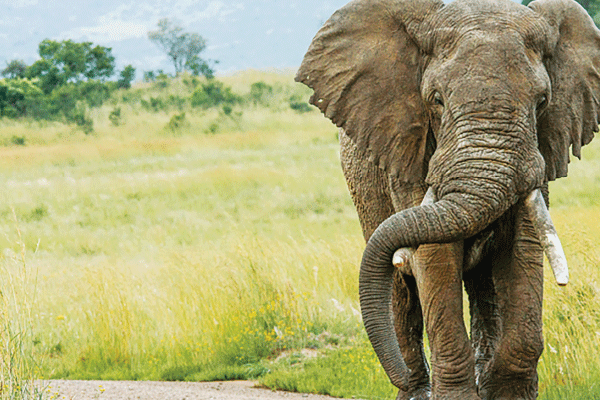

Farewell, Amarula
Rustenburg – “Rest well our boy... You have blessed the park with your footprints all over, and the most awesome viewing for our visitors – with some maybe a little too close,” says Pilanesberg Wildlife Trust marketing and PR manager Perry Dell.
Amarula was one of the six elephants that were transferred from Kruger National Park to Pilanesberg National Park in 1998 to help bring the younger elephants that were on a rampage, under control.
On Tuesday 8 February, Amarula which was also the oldest of the elephants at the park, died from old age at the age of 65.
An elephant carcass was spotted by the Bathawk anti-poaching surveillance patrol and shortly after it was confirmed that it was the remains of Amarula.
He was definitely the most famous elephant of the Pilanesberg National Park. In 2011 he made headlines when he was captured flipping a tourist’s car. According to the game rangers at the time, he was in a state of ‘musth’.
This is when the bull elephant experiences an increase in reproductive hormones and becomes highly aggressive. The week before, Amarula also tried to have his way with the rental car of two French tourists, leaving them without a front bumper, a crumpled roof and a flat tyre.
“Elephants don’t only crush cars because they don’t get the respect due to them, they sometimes react on previous bad experiences. Other times they just do it for the fun, or they are simply annoyed,” Dell says.
Speaking to the Platinum Weekly, North West Parks Board acting chief conservation officer Pieter Nel explained the complexity of elephants:
“They have family structures. It is fascinating seeing them interact with each other. You will even find that members of different ‘families’ will ‘visit’ each other.”
Young elephants were introduced into the park as part of Operation Genesis in 1979. It involved the re-introduction of many species, long vanished from the area.
As time went by, they populated and some of the male bulls who went in musth and wreaked havoc in the park. When some of the elephants had to be culled, the attacks got even worse. Apparently, it was caused by the trauma they experienced, having some of their family members killed.
They started attacking rhinos and by 1996, they reportedly killed a total of 28 rhinos. The situation was brought under control with the introduction of the older elephants, and the discontinuation of culling the elephants.
Amarula will fondly be remembered as the biggest of all the elephants at the park. His close encounters with visitors will be talked about for years to come. As elephant tradition goes, he will also be mourned by his elephant family. Farewell, Amarula.


#FosteringASenseOfCommunity







